"[John] Gould (1804–1881) [photo], one of the most prolific ornithological artists of the 19th century, had a romantic enthusiasm for winged creatures, as well as a passion for natural history and an impulse to catalog. Drawing on his outstanding scientific and artistic talents, he embarked on a series of projects that would eventually make him the leading publisher of ornithological illustrations in Victorian Britain. Gould’s unparalleled career spanned five decades, during which he produced a series of books depicting birds from all over the world." [source]
The images below were sourced from the first two
volumes of Gould's seven volume series on Asian birds.
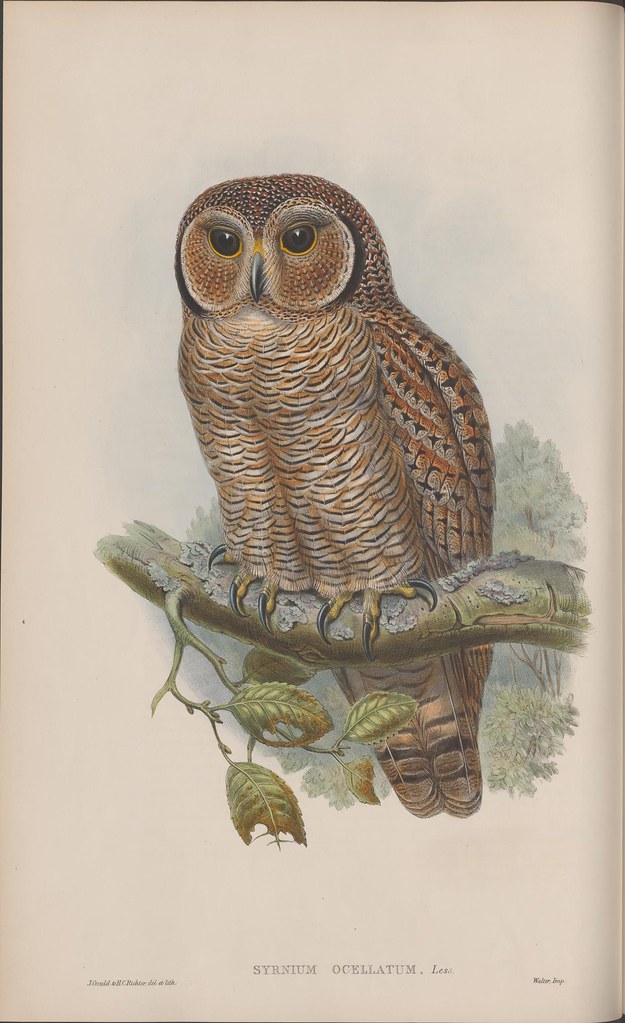
species name: Syrnium ocellatum
common name: Mottled Wood-Owl
locale: NW India [info]

Phodilus badius
Oriental (or: Asian) Bay Owl
SE Asia [info]
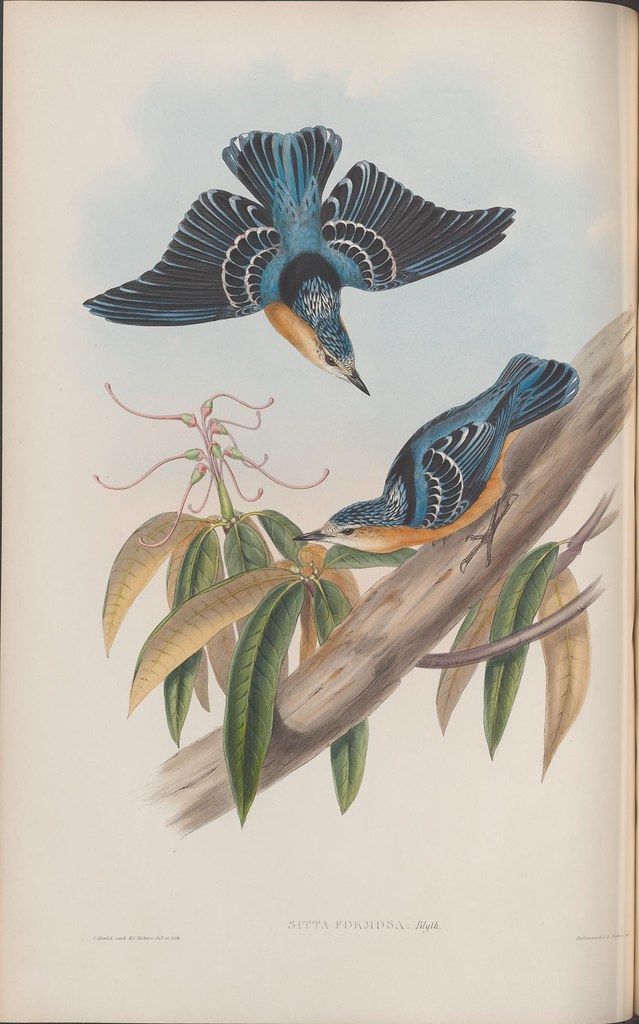
Sitta formosa
Beautiful Nuthatch
Bhutan, Bangladesh, Burma [info]
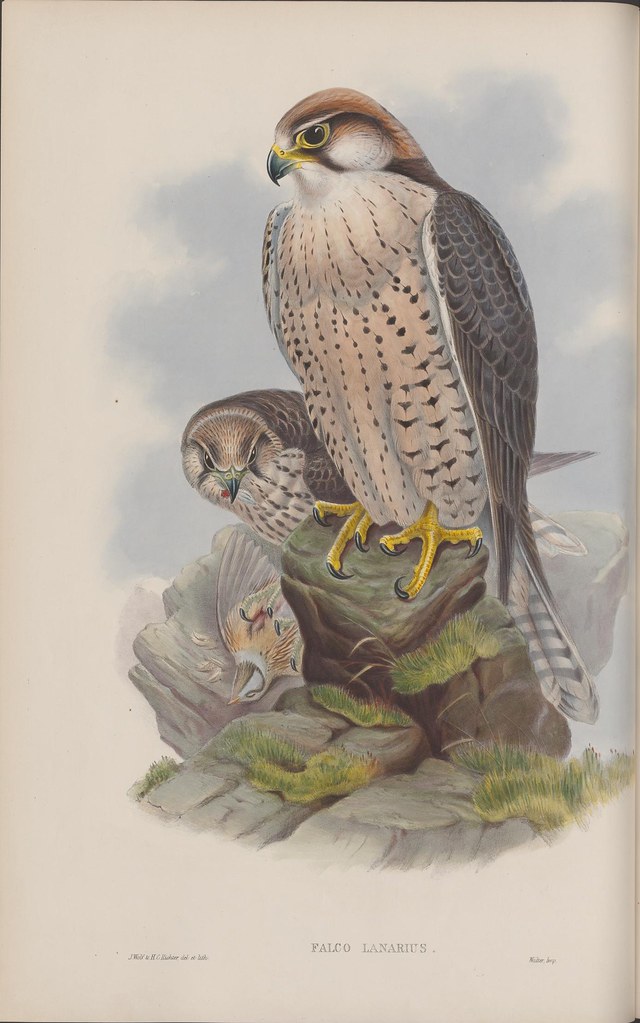
Now: Falco biarmicus
Lanner Falcon
"breeds in Africa, southeast Europe and just into Asia" [info]
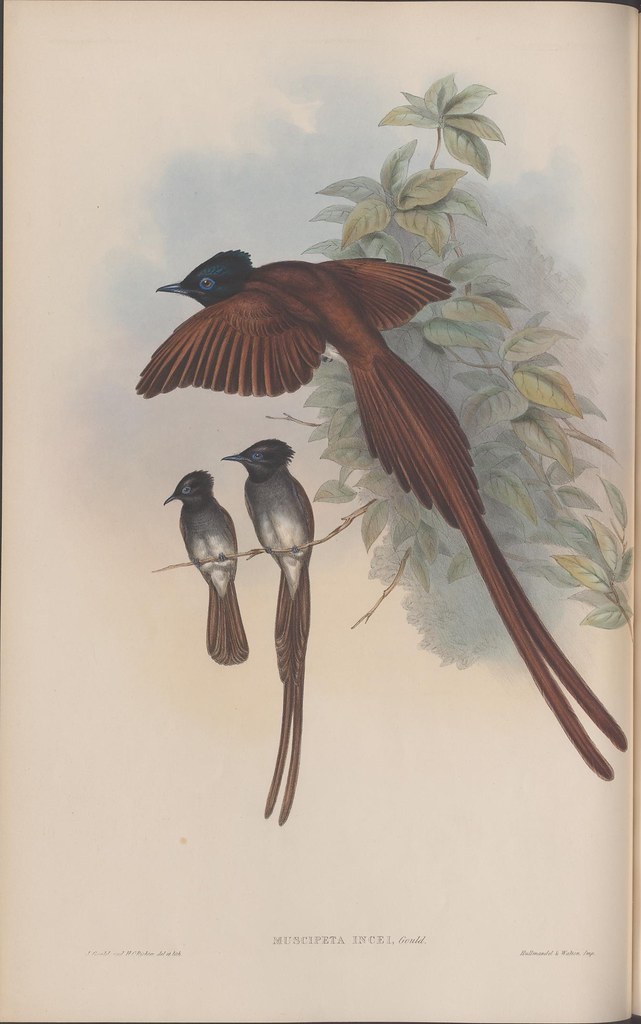
Now: Terpsiphone paradisi
Asian Paradise Flycatcher
Malaysia, Burma, India [info]
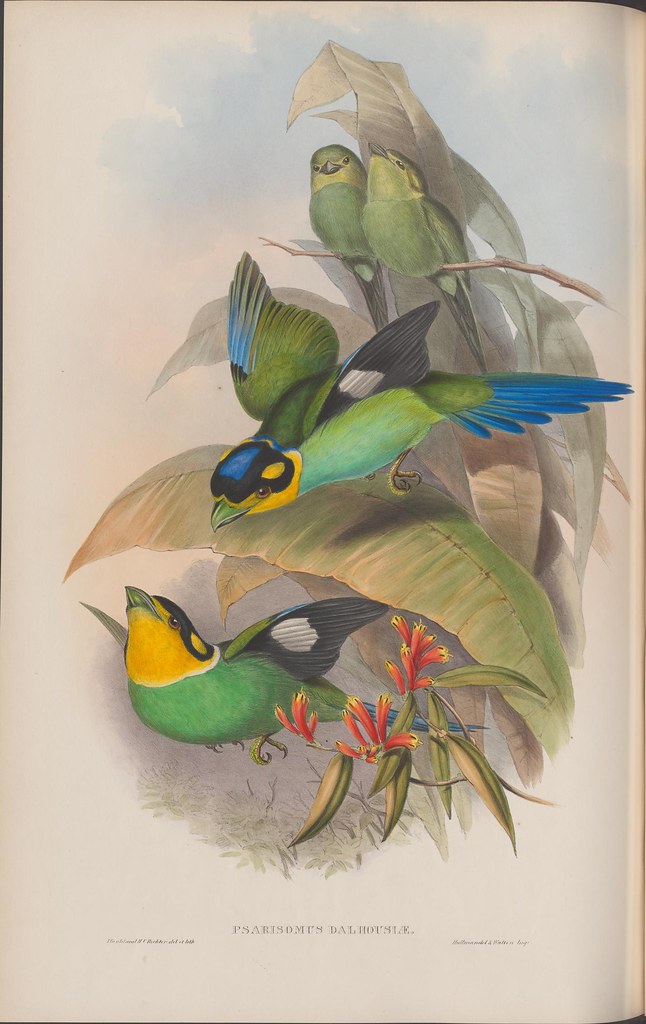
Psarisomus dalhousie
Long-Tailed Broadbill
SE Asia, India, Himalayas [info]
Eurylaimus ochromalus
Black and Yellow Broadbill
Malaysia, Indonesia, Thailand [info]
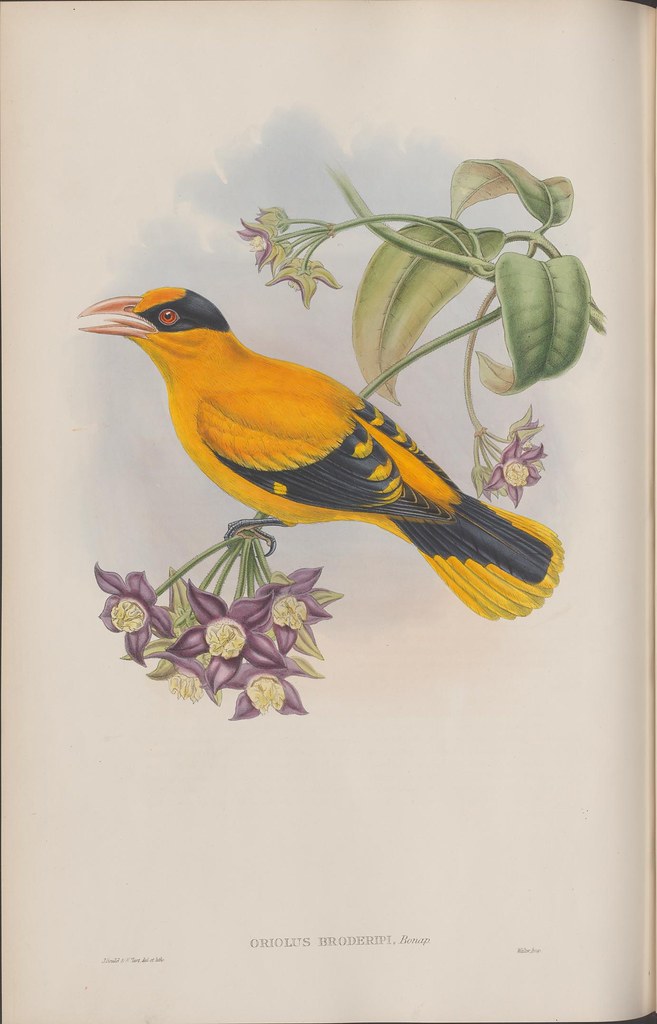
Now: Oriolus chinensis
Black-Naped Oriole
Phillipines, SE Asia, India [info]

Melanochlora sultanea
Sultan Tit
Nepal, Burma, Thailand, Malaysia [info]
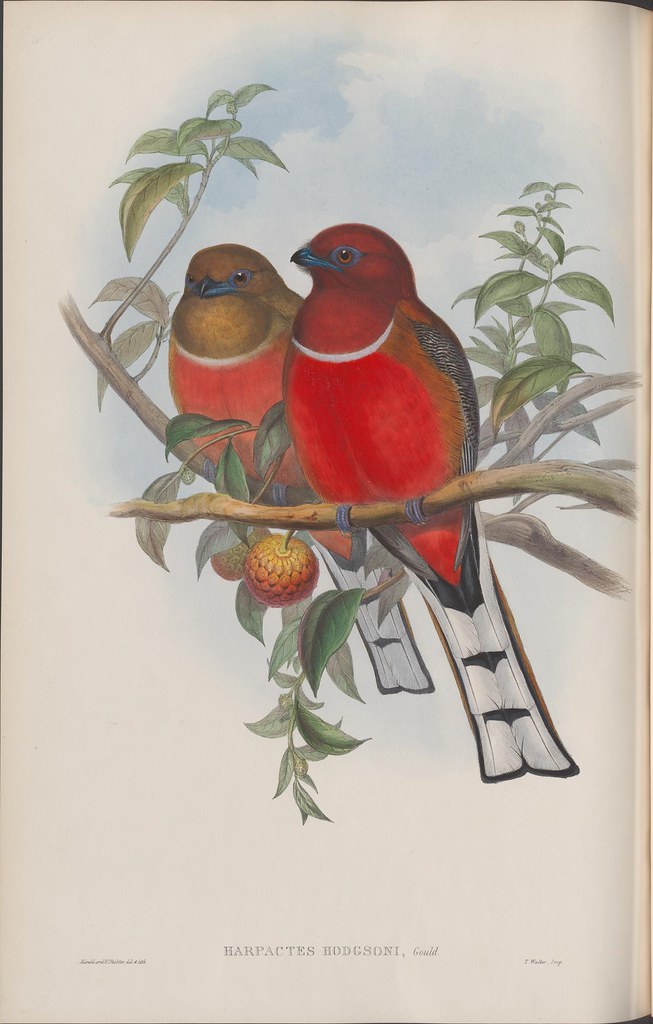
Now: Harpactes erythrocephalus
Red-Headed Trogon
India, Nepal, Bhutan & SE Asia [info]
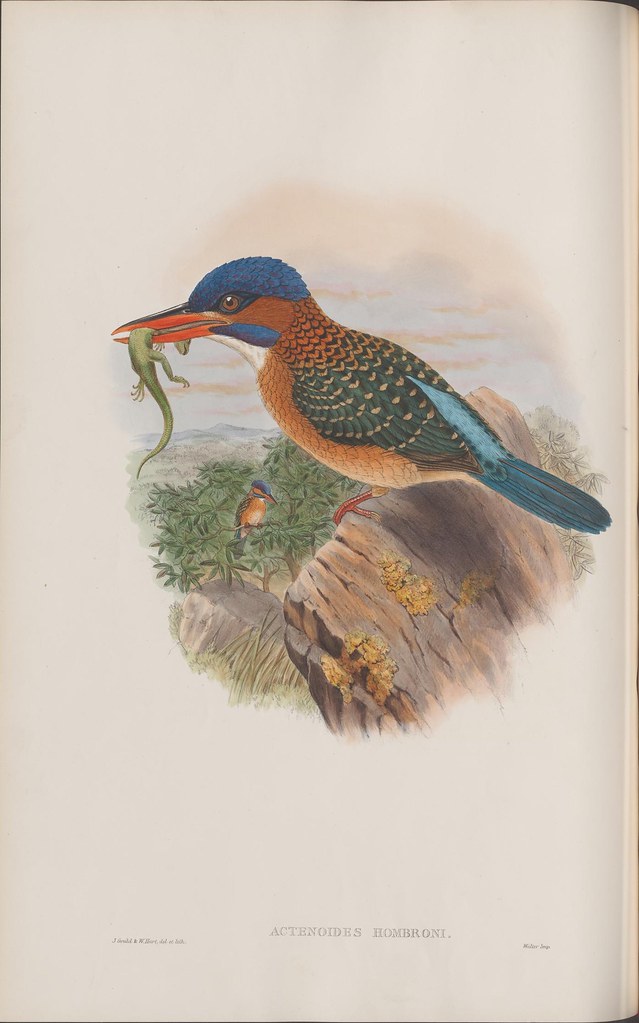
Actenoides hombroni
Hombron's (or Blue-Capped) Kingfisher
Mindinao Island, The Philippines [info]
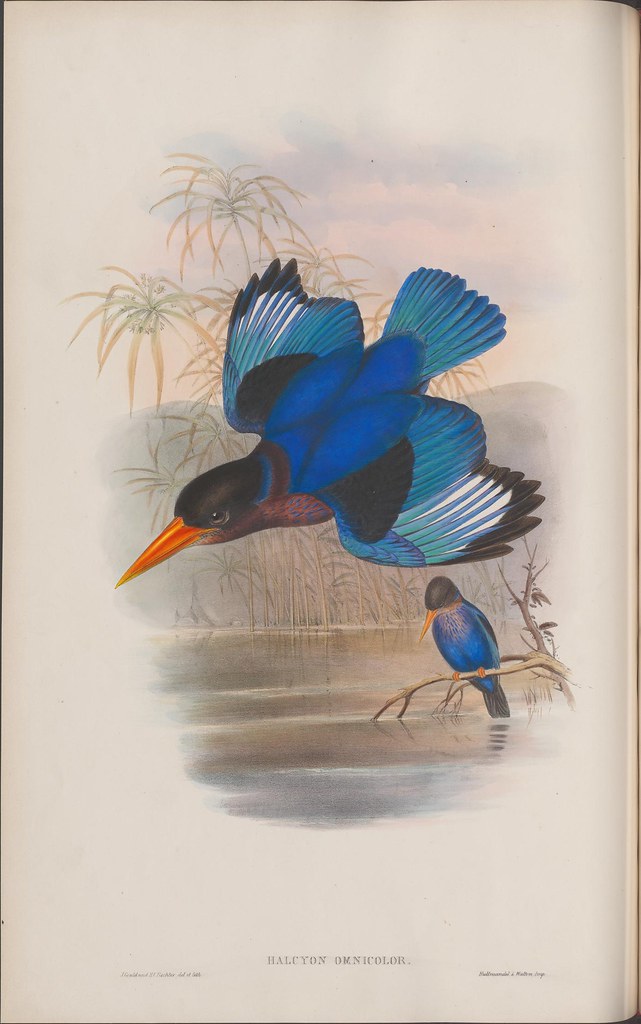
Now: Todiramphus chloris (best guess)
Collared Kingfisher
Asia, Australasia [info]

Coracias indica
AKA Coracias indica AKA Corvus benghalensis
Indian Roller
Far west to SE Asia [info]
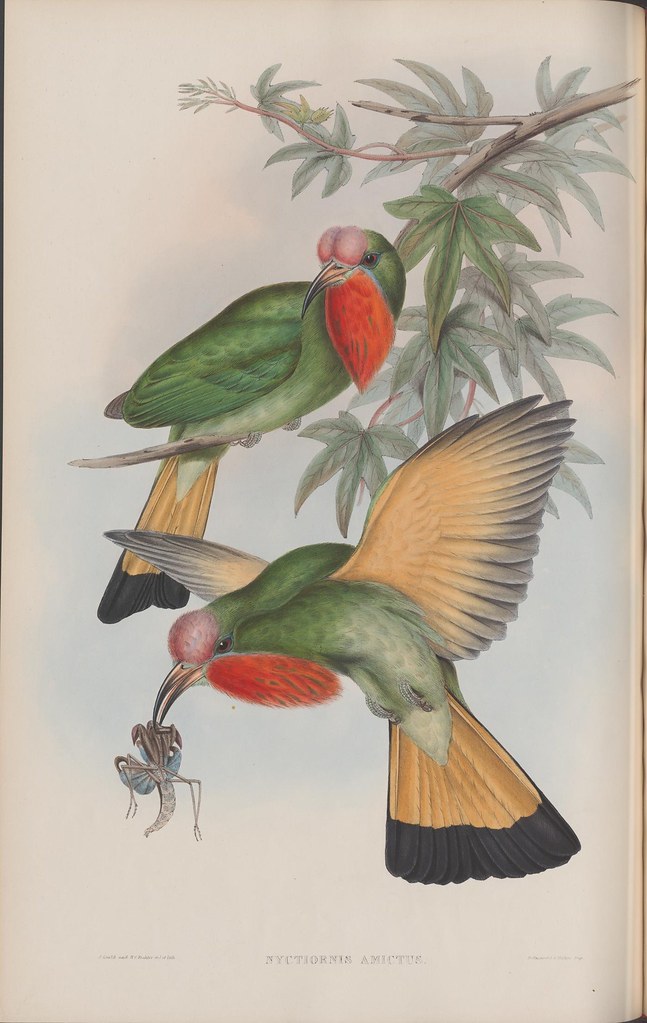
Nyctiornis amictus
Red-bearded Bee-eater
SE Asia [info]
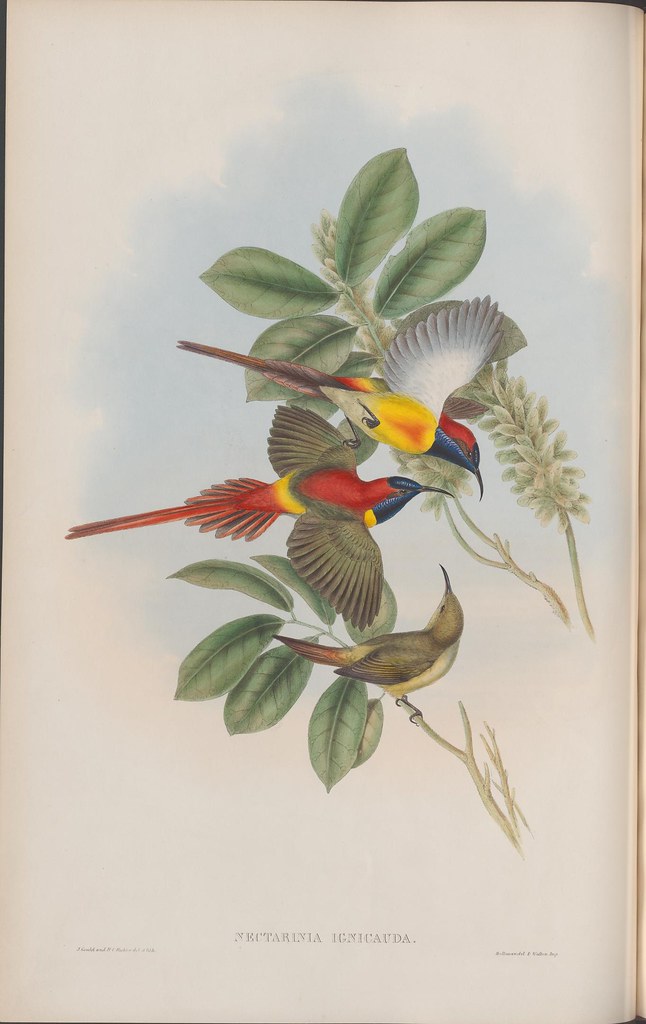
Aethopyga ignicauda
Fire-Tailed Sunbird
N India / Himalayas [info]
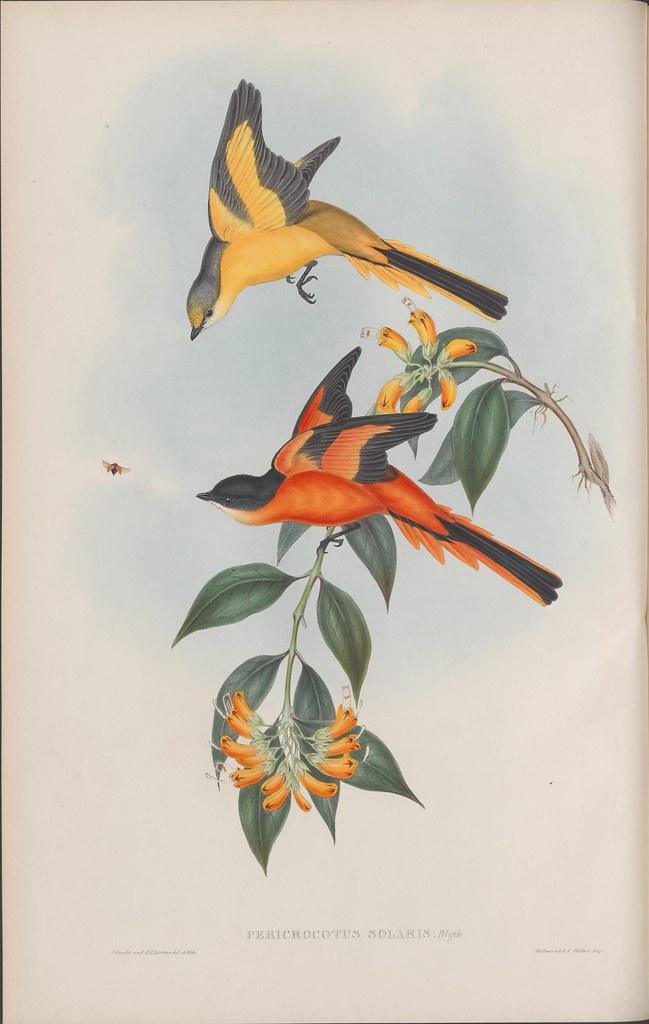
Pericrocotus solaris
Grey-Chinned Minivet
Bangladesh across to China, Thailand and Vietnam [info]
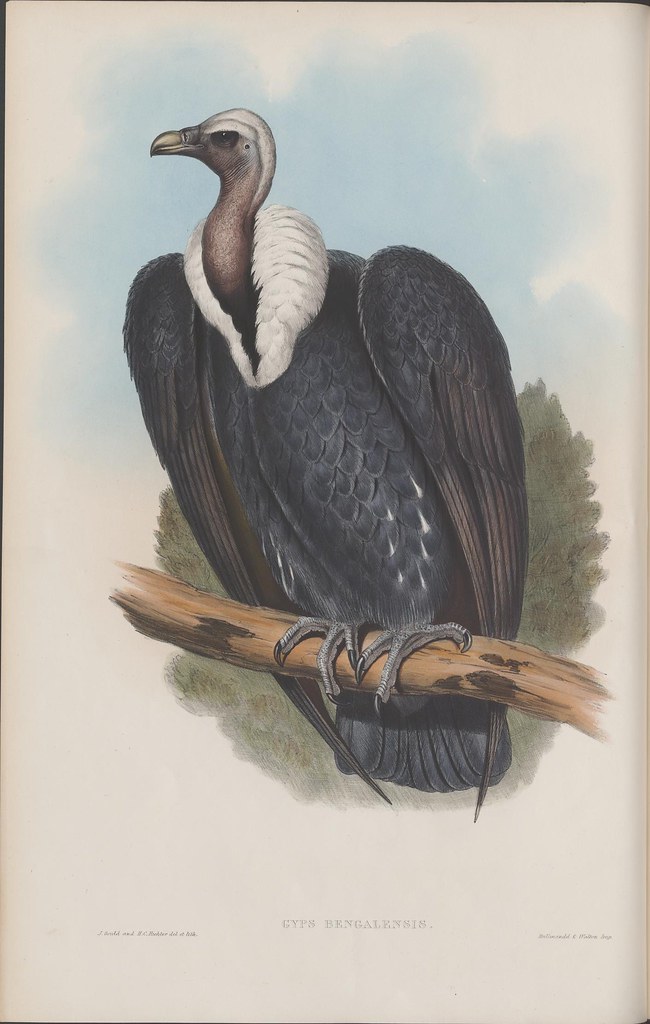
Gyps bengalensi
White-Rumped Vulture
Indian Sub-Continent and some East Asia [info]

Otogyps calvus
Red-Headed Vulture
Indian Sub-Continent and some East Asia [info]
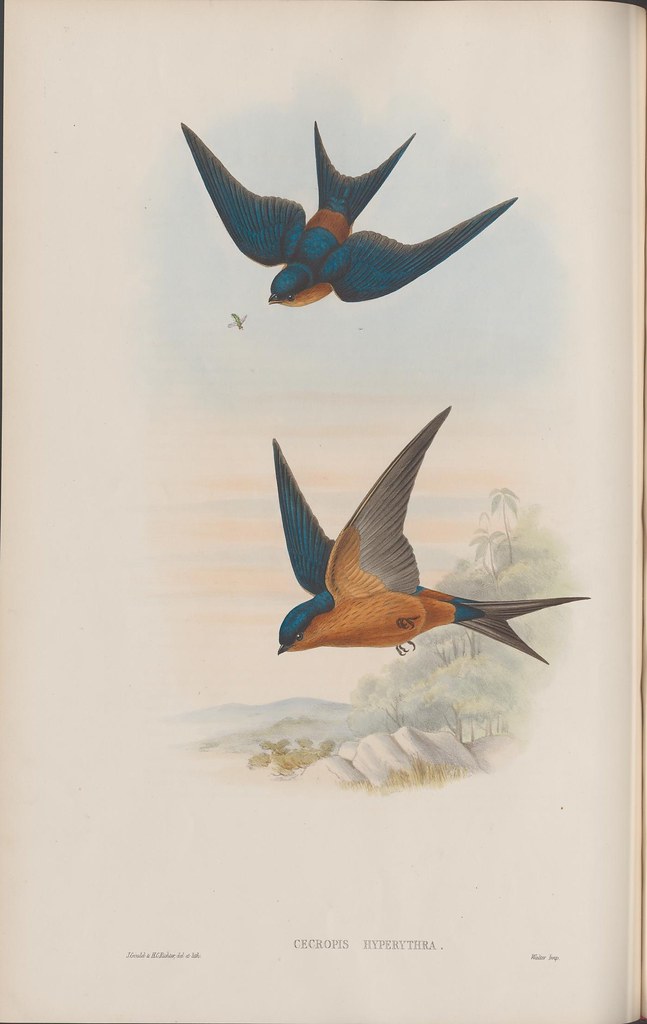
Cecropis hyperythra
Sri Lanka Swallow
Endemic to Sri Lanka
[info]
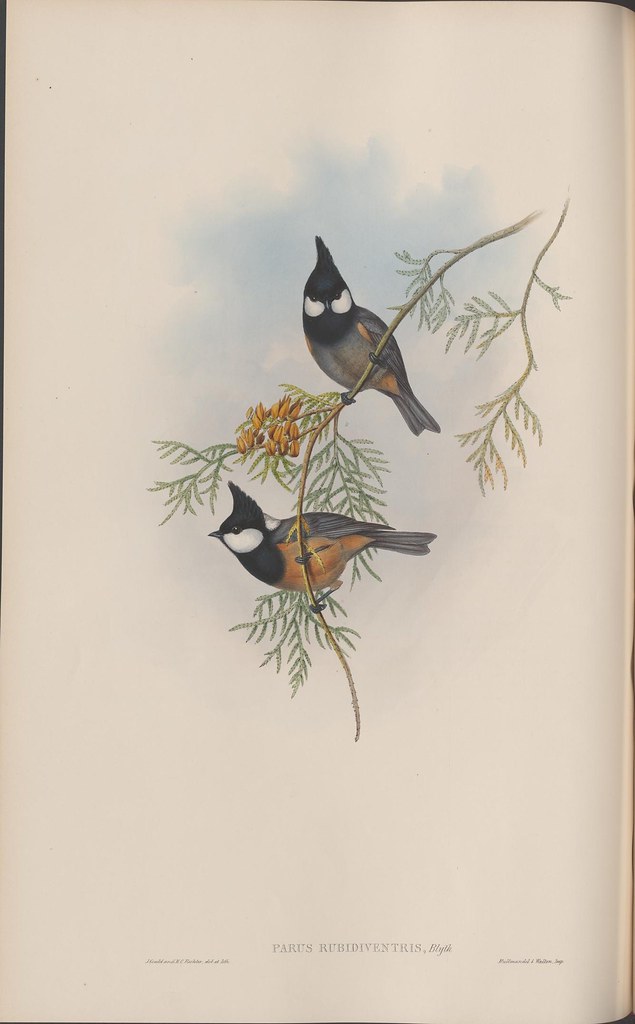
Parus rubidiventris
Rufous-vented Tit
N Asia: Nepal to China [info]
John Gould's contributions to ornithological scholarship and natural history publishing are renowned. He travelled all over the world collecting birds obsessively. The pencil, ink and watercolour sketches of Gould's beloved quarry provided the designs for his book illustrations. Gould was ably assisted in bringing these initial sketches to print-quality, colour plates, by his wife, Elizabeth Gould, until her death following childbirth in 1841. Subsequently, Gould hired artists - including Edward Lear{1} {2} (the greatest of all bird artists in my opinion) - to help turn his designs into lithographic plates: "I am happy to say that I am getting my Birds beautifully drawn by other artists and as I have always [done] I shall continue to make the sketches."^ {1841}
Two areas of Gould's extensive legacy are particularly noteworthy. Gould was largely responsible for putting ornithological studies in Australia on the map as a consequence of an extended visit in the late 1830s. Of the some 750 species of bird that live here in Australia, Gould is believed to have provided the first description for nearly half of them. He also published a book on the local non-feathered animal population, and again, recorded the first scientific description for about 40 of the species. In a country with such a high regard for their unique fauna, Gould holds a particularly special place in its history. That makes the following all the more galling (doubly so when one considers Gould's hopes in his will that his own copies of his various series on birds would remain in the family "in the nature of heirlooms"):
"John Gould's copy of 'The Birds of Australia', one of only 250 sets published, along with his 'Mammals of Australia', 'A Monograph of the Macropodidae' and 'Birds of New Guinea' were sold to an Australian bidder in 1987. Their owner subsequently broke up the volumes and auctioned 1213 plates individually."^Charles Darwin consulted with Gould in relation to birds that were collected in the Galápagos Islands during the voyage of H.M.S. Beagle. Gould corrected Darwin's assessment of the unique species, providing pivotal analysis and identification of both birds and some animals. The information Gould provided - particularly about the variation of Galápagos finches - was combined with knowledge of the specific islands where each specimen was collected. Comparison between the island birds (and against comparable mainland species) was an important catalyst in Darwin's formation of the theory of evolution by natural selection. Gould's conclusions were published in Darwin's 'Zoology of the Voyage of H.M.S. Beagle' in ~1840.
- 'The Birds of Asia' by John Gould was published in London between 1850 and 1883 and all seven volumes are owned by BPU Neuchâtel and hosted on the Swiss E-Rara digital collection portal site.
- Entry on John Gould in the 'Australian Dictionary of Biography'.
- The Austaralian Museum has a fairly extentisve site devoted to Gould and his life and work.
- John Gould works available from Amazon.
- A 1968 review in La Troble Journal of the few original Gould sketches held at La Trobe Library in Melbourne.
- All mentions of "gould" in La Trobe Journal. ("This highly regarded journal was founded by the Friends of the State Library of Victoria in 1968 to promote interest in the Library's Australiana collection.")
- John Gould at Wikipedia.
- Previous post featuring John Gould monographs: Gould Hummingbirds - The Trogons and, more generally: science | fauna.
- This post first appeared on the BibliOdyssey website.



















1 comment :
Outstanding. Beautiful.
Post a Comment
Comments are all moderated so don't waste your time spamming: they will never show up.
If you include ANY links that aren't pertinent to the blog post or discussion they will be deleted and a rash will break out in your underwear.
Also: please play the ball and not the person.
Note: only a member of this blog may post a comment.